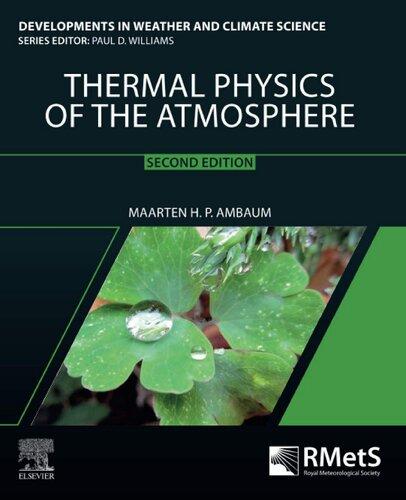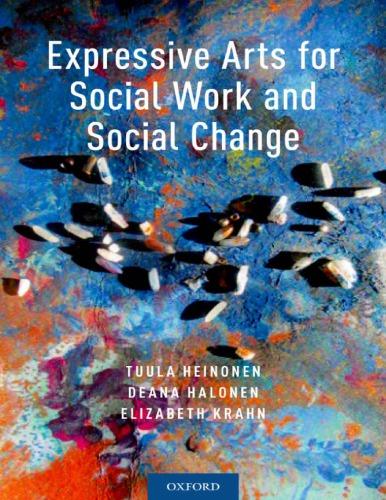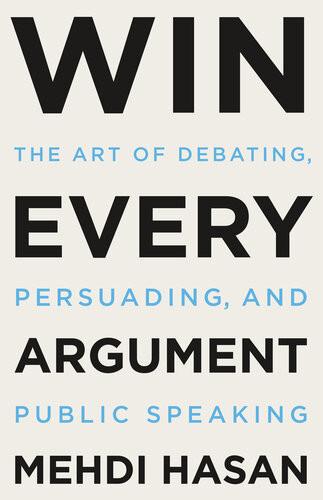Sustainabilityofconcrete
SidneyMindess
UniversityofBritishColumbia,Vancouver,BC,Canada
1.1Introduction
Concreteissocommonthatwesimplytakeitforgranted.Itishardtoimaginea worldwithoutconcrete,whenweconsidertheconcretestructures,pavements, airfieldrunways,bridges,sidewalks,dams,offshoredrillingplatforms,andsoon thatconstituteourbuiltenvironment.Infactconcreteis,nexttowater,themost widelyusedmaterialintheworld,asmaybeseenfrom Table1.1
Inconsequenceoftheenormousvolumesofmaterialsusedinthemanufacture ofcementandintheproductionofconcrete,thecementandconcreteindustries togetherareestimatedtoaccountforabout6% 8%ofglobalman-madeCO2 emissions.Thisislikelytoincreaseoverthenextfewdecades,asthe“less developed”countriesinAsia,Africa,andSouthAmericacontinue(orbegin)to industrializeonalargescale.ItshouldbenotedthatintheproductionofPortland cement,onaverageabout0.84tonnesofCO2 areliberatedpertonneofcement produced.Somewhatlessthan40%ofthiscomesfromthecombustionoffuel,the remainderfromthedecompositionofthelimestone(CaCO3)duringcalcination.
Table1.1 Annualworldwideproductionofselectedmaterials,2016(tonnes).a
Concrete30billion(approx.)
Portlandcement4.6billion
Steel1.63billion
Coal7.7billion
Wood3billion(approx.)
Foodproducedforhuman consumption 4billion(approx.)
Wheat730million
Salt280million
Sugar175million
Gold187,200tonnes throughoutallofhuman history,whichwouldoccupya21m3 cube!
aDatadrawnfromvarioussources.
4DevelopmentsintheFormulationandReinforcementofConcrete
WhilethisislessthantheamountofCO2 producedbythegenerationofelectricity fromcoal-firedpowerplants,ortheamountgeneratedintransportation,itisstill significant.
Weliveinaworldoffinitenaturalresourcesandsourcesofenergy.Wemust thereforeconsiderthecementandconcreteindustriesinlightoftheconceptof sustainabledevelopment,whichmaybedefinedas Developmentthatmeetsthe needofthepresentwithoutcompromisingtheabilityoffuturegenerationstomeet theirownneeds (Brundtland,1987).Ofcourse,thisdefinitiongoesfarbeyond merelyconsideringnaturalresourcesandtheenvironment—itrequiresaswell considerationofthesocialandeconomicconsequencesofouractions,asshown schematicallyin Fig.1.1.However,thesebroaderissueswillnotbeconsidered here;thefocuswillbeontheconcreteitself.
Therearenowincreasingpressuresonthecementandconcreteindustriesto makeconcreteinwaysthatminimizeitsenvironmentalimpact(“green”concrete). Thesepressuresinclude:
● morestringentgovernmentregulations,
● pressurefromenvironmentalgroups,
● desirebyownersandarchitectsforever“greener”buildings,and
● impositionofacarbontax.
Ithasthusbecomeimperativetodecreasetheenvironmentalimpactofconcrete structures;itistimetomakethemmoresustainable.Howcanwedothis?
Figure1.1 Theholisticviewofsustainability.
Source:AdaptedfromTheConcreteCentre(2007). Sustainableconcrete.Surrey,United Kingdom:TheConcreteCentre(TheConcreteCentre,2007).
1.1.1Stepstosustainability
Thereareanumberofwaysinwhichwecanimprovethesustainabilityofconcrete (Aıtcin&Mindess,2011),including:
● replacinguptoatleasthalfofthePortlandcementwithsupplementarycementing materials(SCMs);
● makingmuchmoredurableconcretes;
● usinghigherstrengthconcretes;
● designingmoreefficientconcretemixes,withparticularemphasisonthetotalparticle sizedistribution;
● usinggreateramountsoffillers;
● manufacturingcementmoreefficiently;
● usingwastematerialsasfuels;
● usingrecycledconcrete,andotherindustrialwastes,asaggregatesources;
● capturingandstoringorsequesteringCO2 emissions;
● usingcementkilndustincertainapplications;
● usinglesswater;
● improvingstructuraldesignandbuildingcodes.
Clearly,someofthesestrategiesaremoreeffectivethanothers,butcollectively theycanleadtoverylargeefficiencies,frombothanenvironmentalandan economicperspective.Themostsignificantonesare:
● replacingasmuchcementaspossiblewithSCMs;
● usinghigh-strengthconcreteswhereverpracticable,whichwilldecreasetheamountof concreterequiredtosustainstructuralloads;
● increasingthedurabilityofconcrete,toprovidealongerservicelifebeforetheconcrete mustbereplaced;
● producingmuchmoreefficientconcretemixes,byoptimizingtheparticlepacking.
Thesefourwillbedealtwithgreaterdetailbelow.However,itisworthbriefly summarizingtheothereightstrategieshere.
Fillers:ThesearematerialsthatdonotreactchemicallywithPortlandcement butmaynonethelessbebeneficialthroughphysicalaction.Byfarthemostcommon suchmaterialisfinelygroundlimestone(whichisofcoursereadilyavailableat cementplants),thoughothermaterialssuchasfinelygroundquartzcanalsobe used.Fillerssuchasthesecanimprovetheparticlepackingofthesystemand mayacceleratethehydrationprocessinthefirstfewhours;theymayalsoaffectthe concreterheologyandcontributetostrengthanddurability(Lothenbach,LeSaout, Gallucci,&Scrivener,2008).Theyarealso,ofcourse,aneconomicalreplacement forPortlandcement,whichprobablyaccountsfortheirwideuse.NorthAmerican codespermituptoa5%substitutionoflimestone,thoughresearchhasshownthat uptoabout12%maybeaddedwithoutanydeleteriouseffects(Bentz,Irassar, Bucher,&Weiss,2009;Thomasetal.,2010).Worldwide,theaveragelimestone contentiscurrentlyabout7%(Scrivener,John,&Gartner,2016).However,thereis clearlyalimittohowmuchfillerscanreducethecarbonfootprintofcement.
6DevelopmentsintheFormulationandReinforcementofConcrete
Itshouldbenotedthatlimestonedoes,infact,exhibitsomelimitedreactivitywith cementandcouldaseasilybeclassifiedasan(inefficient)SCM.
Moreefficientcementproduction:Thetheoreticalfuelrequirementtoproduce 1tonneofcementisabout1.9GJ.Overthepast50years,therehasbeena significantincreaseintheenergyefficiencyofmoderncementkilns.Stateoftheart kilnscannowachieveanefficiencyofabout63%,sohereisprobablylittlethat canbedonetoimprovethis.However,therewouldcertainlybeconsiderable benefitinupgradingthemanyoldercementplantsthatarestillinservice.
Alternativefuels:Traditionally,coal,gas,andoilhavebeenusedtofirecement kilns.However,largelyforreasonsofeconomy,anumberofotherorganicmaterialsarenowincreasinglybeingusedasfuels:spentsolvents,wasteoil,automobile tires,petroleumcoke,andsoon,dependingonlocalavailability.Ofcourse,thishas noparticulareffectontheamountofenergyrequiredtoproducecementoron greenhousegasemissions.However,thisdoesprovideausefulmeansofusingand disposingofwhatwouldotherwisebewastematerials,aswellasawaytoreduce ouruseoffossilfuels.
Recycledconcreteasaggregate:Concretereclaimedfromthedemolitionofold concretestructuresorconcretepavementsmaybeprocessedtoproduceaggregates suitableforuseinnewconcretestructures.Theprocessingisrelativelystraightforward:crushing,removalofcontaminantmaterials,andwashing.Thismaybe particularlysignificantnearlargeurbanareas,wherenaturalaggregatesourcesmay havebeendepleted.Recycledconcreteaggregatesaremostsuitableforusascoarse aggregate.Concretesmadewithsuchaggregatestendtobeabitweakerandless durablethanconcretesmadewithnaturalaggregates.However,therearemany applicationsinwhichtheseaggregatesmaybeusedeconomicallyandsafely. Again,thisdoeslittletoreducethecarbonfootprint,ortosavefuel,butitdoes helpwiththedisposalofconcretewastes.
Cementkilndust:Thisistheveryfinematerialcollectedbythefiltersystem inacementkiln.Itisnotquitethesameascementclinker,becauseithasnot beencompletelyburnt.Itisproducedinsignificantamounts,approximately 9tonnesper100tonnesofclinker.Whileitisoftentreatedasawastematerial,it canreplacecementinsomeapplications,suchasinsoilstabilization,orinthe productionofcontrolledlow-strengthmaterials(Lachemi,Hossain,Lotfy,Shehata, &Sahmaran,2009).
Usinglesswater:Over1trillionlitersofpotablewaterareusedannuallyinthe productionofconcrete.Areductioninthe w/b ratiowouldnotonlysavewater,but alsoleadtostrongerandmoredurableconcrete.
Improvingbuildingcodes:Concreteisstillspecifiedonthebasisofits28-day (oroccasionally56-dayor90-day)compressivestrength.Durabilityandother performancecharacteristicsarealltoooftentreatedassecondaryconsiderations. Further,themixdesignprocedurestendtobetooprescriptive.Inessence,this generallyleadstotheuseofhighercementcontentsthannecessaryandtendsto stifleinnovationonthepartofconcreteproducers.Itwouldbehelpfulifthemove to performance ratherthan prescriptive standardscouldbeaccelerated.Thiswould
thenprovideincentivestotheconcreteproducerstomakemoreefficientuseof availableresourcestoproduceconcrete.
CaptureandstorageoruseofCO2 emissions:Onewayofreducingtheemission ofCO2 intotheatmosphereisbythecaptureoftheCO2 thatisproducedduring cementmanufacture,andeitherstoring(sequestering)theCO2 orusingitinthe manufactureofconstructionproductsorotherchemicals.Thetechnologyalready existstocaptureCO2 fromthefluegasesinacementplant.Itishopedthatthe capturedCO2 wouldthenbepermanentlystoredinundergroundgeologicalformations,orinjectedatgreatdepthsintotheocean,whereitwouldthendissolve. Unfortunately,thecostsinvolvedinpurifyingtheCO2 andconcentratingitathigh pressurewouldgreatlyincreasethecostofcementproduction,andsothisapproach isunlikelytobefollowedonalargescale.
AmorepromisingpossibilityistousetheCO2 inthecuringofconcreteblocks orotherprecastelements(Shi&Wu,2009).WhenCO2 reactswithfullyhydrated cement(thecarbonationthatoccurswhenconcreteisexposedtotheair),the followingreactionstakeplace.Usingstandardcementchemistrynotation,1
1 CO2 ! CaCO3 1 H2 O
S2 H3 1 3CO2 ! 2SiO2 1 3CaCO3 1 3H2 O
Whilethismaysomewhatimproveconcretestrengthandimpermeability, thesereactionsarenotdesirable.TheyleadtoareductioninthepHofthepore solutionwithintheconcrete;thiscanleadtodepassivationandthencorrosionof thereinforcingbars.
However,ifCO2 isintroducedintothefreshconcreterightaftermixing,asetof differentreactionstakeplace:
S 1 CO2 1 3H2 O ! C3 S2 H3 1 3CC
2C2 S 1 CO2 1 3H2 O ! C3 S2 1 H3 1 CC
Thatis,thesereactionsproducecalciumsilicatehydrateandcalciumcarbonate, butnoCH. Thiswillenhancetheearlystrengthgainoftheconcrete,reduce efflorescence,andreducepermeability.Thistechniquecanbeusedtoreplace,at leastinpart,steamcuringoftheconcrete.Theeconomicfeasibilityofemploying thistechnologyonanindustrialscaleisunderactiveconsideration;asyet,however, itwouldappeartooexpensiveforwidespreaduse.
Ofcourse,itmaynotbepossibletoadoptanyoralloftheseeighttechniques onaspecificproject,becauseoflimitationsonmaterialavailability,orspecial requirementsonstrengthand/ordurability.However,engineers,architects, specifiers,andconcreteproducersshouldallbeatleastawareofthepossibleways ofmakingconcretemoresustainable.
Letusnowturntothefourmostsignificantstrategies.
CH
C3
2C3
1.1.2Replacingcementwithsupplementarycementingmaterials
ProbablythemosteffectivewayofreducingboththeemissionofCO2 and energyconsumptionistosubstituteSCMsforaportionofthecement.SCMsare pozzolanic materials:finesiliceousmaterialsthatreactatambienttemperaturewith thecalciumhydroxide(lime)releasedduringthehydrationoftricalciumsilicate anddicalciumsilicate,toformwhatwerefertoassecondaryC S H:
TheC S Hthusproducedisnotverydifferentfromthatproducedbythe hydrationofPortlandcement.Thekineticsofthisreactionaresimilartothoseof C2S.ThustheadditionofapozzolanhasasimilareffecttoincreasingtheC2S contentofthecement:loweringtheamountofearlyheatevolution,reducingthe earlystrength,butnotthelong-termstrength.Sincethepozzolanicreactionshave anoverallincreaseinsolidvolume,theporosityofthepastewilleventuallybe reduced,resultinginhigherstrengthanddurabilitycomparedwithaplainpasteof comparablereaction.PozzolansmaysubstituteforPortlandcementatlevelsupto about50%(orevenhigherforslag).Eachkilogramofsubstitutionwillreduceby about0.8kgtheemissionofCO2.
Originally,naturallyoccurringpozzolanswereused.However,todaythevast majorityofpozzolansareby-products(orwastes)ofotherindustrialprocesses. PozzolanicmaterialsandtheirusesaredescribedingreatdetailinChapter3, SupplementaryCementingMaterialsofthisbook.However,forthesakeof completeness,theprincipaltypesofpozzolanswillbedescribedbrieflyhere.
Naturalpozzolans havebeenusedsinceancienttimes,byboththeGreeksand theRomans.Forexample,boththeParthenonandtheSuezCanalusedpozzolanic volcanicashfromtheGreekislandofSantorini;theEddystonelighthouseused pozzolanfromCivitavecchia,about80kmfromRome.Theywereusedinthe UnitedStatesasfarbackas1910 12forconstructionoftheLosAngelesaqueduct, andlaterinsuchiconicstructuresastheGoldenGatebridge,andtheBonneville Dam.Becausenaturalpozzolansreactquiteslowlyatroomtemperature,theyare notusedatadditionratesgreaterthanabout15%.
Flyash istheinorganic,noncombustibleresidueofpowderedcoalafterburning inpowerplants.ItisthemostextensivelyusedSCM,commonlyatsubstitution levelsofabout15% 25%.However,itcanbeusedatmuchhigherlevelsinmany applications,perhapsupto60%(Malhotra,1994).Likemostpozzolanicmaterials, flyashslowsdowntherateofstrengthdevelopmentatearlyages,butovertime willleadtostrongerandmoredurableconcrete.
Accordingto Scriveneretal.(2016),about0.9billiontonnesofflyashare producedannually,butbecauseoftheveryvariablequalityofflyashes,onlyabout one-thirdofthisamountiscurrentlyusedinconcrete.Further,thereisagradual trendworldwidetophaseoutburningcoaltoproduceelectricity,sincethisproducesverylargeamountsofCO2.Thereisthuslittlechancethatflyashproduction willincreaseatthesamerateascementproduction;indeed,theconverseisfar 8DevelopmentsintheFormulationandReinforcementofConcrete
CH 1 S 1 H ! C S H
morelikely.Insomepartsoftheworld,thereisalreadyashortageofflyash. Comparedtothemassofcementproducedannually(B4.6billiontonnes),flyash willnotbeabletoreducecementproductionanduseinverysignificantamounts.
Blastfurnaceslag isaby-productoftheproductionofpigiron.Itconsistsprimarilyofsilica,alumina,andlime,withacompositionsimilartothatofPortland cementitself.Itcanbesubstitutedforcementuptoperhaps85%,though70%is moretypical.Itisproducedprimarilyinhighlyindustrializedcountries,andso isnoteasilyavailableeverywhere.WhileitisanexcellentSCM,itsproductionis quitelimited,atabout0.33billiont/year;aswell,mostofitisalreadyusedinthe cementandconcreteindustries.Thus,likeflyash,itisunlikelytomakealarge dentintheuseofPortlandcement.
Silicafume isaby-productofthesiliconandferrosiliconindustries.Itisprimarilysilica(SiO2),withsilicacontentsrangingfromabout85%to98%.Itisabout 100timesfinerthanPortlandcementandisthusbyfarthemostreactiveofthe pozzolanicmaterials.Inadditiontoitspozzolanicreactivity,becauseofitsvery fineparticlesize,ithastheabilitytopackbetweenthecementparticles.Itsuseis essentialintheproductionofveryhigh-strength( . 100MPa)concretes;itisalso veryeffectiveinreducingthepermeabilityofconcrete.Itis,unfortunately,also veryexpensive.Becauseofworkabilityproblemsinthefreshconcrete,itis generallyusedatsubstitutionratesofbetween5%and10%.Again,worldwide productionistoosmalltohaveanysignificanteffectontheamountofcement produced.
Metakaolinandcalcinedclay:Kaolin(theclayusedtomakefinechina)isa hydratedaluminosilicate.Whenitisheatedtoabout750 C 850 C,thewateris drivenoff,andthematerialisthencalledmetakaolin.Metakaolinisaveryreactive pozzolan,thoughitisnotaseffectiveassilicafume.Currently,severalnatural depositsofthismaterialarebeingexploitedcommercially.
Ordinaryclayscanalsobedehydratedataboutthesametemperatures,andthey toothenbecomepozzolanic(Antoni,Rossen,Martirena,&Scrivener,2012; Fernandez,Martirena,&Scrivener,2011).Becauseclayreservesaresovast worldwide,theymayeventuallyprovideanalmostunlimitedsourceofSCMs. However,withcalcinedclays,thereareproblemswithaveryhighsurfaceareaand consequenthighwaterdemand;theseneedtobesolvedbeforethematerialcanbe usedwidely.
Ricehuskash isobtainedbyburningricehusksatatemperatureofabout750 C. Theresultingashisprimarilyavitreoussilica,whichishighlypozzolanic.
Otherpozzolans:Thereareanumberofothermaterialsthathavegoodpozzolanicproperties,butwhicharenotcommonlyused.Theseincludeperlite,diatomaceousearth,pulpandpapersludge,spentpot-linersfromaluminumsmelters,and soon.Thesewillnotbediscussedherefurther.
Asmaybeseenfromtheabove,thereisaconsiderablevarietyofpossible pozzolanicmaterialsthatcanbeusedinconcrete,varyinginquantity,reactivity, quality,geographiclocation,andcost.Currently,binders(cement 1 SCM)contain, onaverage,about20%ofSCMs:primarilyflyash,slag,andfinelydividedlimestone.However,formany“lowlevel”applications(thatis,thosenotneedinghigh
strengthorspecialdurabilityrequirements),thiscouldbeincreasedtoatleast50%, whilemaintainingadequatequality.ThisalonecouldreduceCO2 emissionsby about15% 20%.Asmentionedabove,thecurrentproductionoftheconventional pozzolansisinsufficienttopermitthisincreaseglobally.However,oncethecalcinedclayscancomeintowidespreaduse,particularlywhencombinedwithground limestone,suchanincreaseintheuseofSCMswouldbequitefeasible.Thisis probablythesinglemosteffectivewayofreducingthecarbonfootprintofconcrete.
1.1.3Improvingconcretedurability
Clearly,ifwewereabletoextendthelifeofconcretestructuressignificantly,this wouldsaveenergyandgreenhousegasemissions,calculatedovertheentire lifecycleofthestructure.Withproperdesignprocedures,theappropriateuseof admixtures,andareducedwater/binderratio,itshouldberelativelystraightforward toincreasetheeffectivelifeofconcretestructuresusingtoday’stechnology. Wealreadyknow how todothis;theproblemistoputthisknowledgetouse universally.Accordingto Aı¨tcinandMindess(2011),“withinthesameglobalCO2 quota,atleasttwiceasmuchdurableconcrete( . 100yearlifecycle)canbeproducedwiththepresenttechnologyandwithoutanymajorfinancialinvestment.The onlyinvestmentwillbetoputintopracticepresenttechnologiesandtoeducatethe industrytochangetheirbadhabits.”Whileuntiltheendofthe20thcenturythe cementandconcreteindustriesfocusedmainlyonlyon compliancewithstandards and profitability,theynowhavetofocusequallyon sustainability,asshownschematicallyin Fig.1.2
Educatingtheindustry.Weknowhowtoproducedurableconcrete!Aftermore thanacenturyofresearchanddevelopment,thebasicsofproducingconcretethat willbedurableunderalmostanycircumstancesarenowwellknownandare describedindetailinnationalandinternationalstandards,suchas ACI201.2R-16 (2016): GuidetoDurableConcrete.However,wecontinuetowasteaconsiderable amountofconcrete(andhencecement)because
● Wedonotusewaterreducersaseffectivelyandsystematicallyasweshould.
● Specificationsforplacingandcuringtheconcreteareoftenpoorlywritten.
● Curingoftheconcreteisoftenratherhaphazardandoftendoesnotproperlyadheretothe guidelines.
● Structuraldesignersfocusmostlyonstrengthanddonotproperlyaccountfordurability considerations.
Collectively,thesesortsoferrorstendtoreducethedurabilityoftheconcrete, leadingtoearlyrepairsorrehabilitationprograms.Itisoftensaidthatthebiggest competitortoconcreteisnotsteelorwood,butbadconcrete.Toproducegoodconcrete,theremustbepropercooperationandcoordinationamongthedesigners,the cementproducers,thespecifiers,andthecontractors.Whilebuildingtrulydurable structuresgenerallyrequiretheuseofmorecementand/oradmixturesinitially, thesecostsaredwarfedbythesavingsfromfewerrepairsandrehabilitations,anda muchlongerservicelife. 10DevelopmentsintheFormulationandReinforcementofConcrete
Profitability
Compliance to standards
Sustainability
Figure1.2 The“Bermudatriangle”ofthecementandconcreteindustriesinthe21st century.
Source:FromAıtcin,P.-C.,&Mindess,S.(2011). Sustainabilityofconcrete.Oxford,United Kingdom:SponPress,pp.301.
Ontheotherhand,onemustberealisticaboutthepotentialsavingsingreenhousegasemissionsthatmightderivefromimprovingdurability.Byfarthelargest durabilityprobleminmodernconcreteconstructionisthecorrosionofsteelreinforcement,dueeithertochlorideingressoratmosphericcarbonation.However, onlyabout25%ofthePortlandcementproducedisusedinreinforcedconcrete (Scriveneretal.,2016),andofcoursenotallofthisreinforcedconcreteisexposed tosevereenvironmentalconditions.Thusfromasustainabilitypointofview,itis mostlytheconcreteusedinmassivestructuressuchasdams,bridges,canals,andso onthatwillbenefitfromincreasedlongevity.
1.1.4Usehigh-strengthconcrete
Usinghigh-strengthconcrete(orhigh-performanceconcrete)withalow w/b ratio instructuralapplicationsismoresustainablethannormalstrengthconcrete.For example,asshownby Aı¨tcinandMindess(2011),aconcretecolumnmadewith 75MPaconcretewouldusehalfasmuchcement,andonlyathirdasmuchaggregate,asthesameunreinforcedcolumnmadewith25MPaconcrete.Ofcourse, thesesavingswouldbelessforbeamsthanforcolumnsbutwouldstillbe substantial.
12DevelopmentsintheFormulationandReinforcementofConcrete
Anadditionaladvantageofusingsuchloww/bconcretesisthatsuchconcretes willbelesspermeabletobothgasesandliquids,renderingthemmuchmoredurable inextremeexposureconditions.Again,however,sinceonlyabout25%ofconcrete isusedinreinforcedconcretestructures(asnotedabove),thereductionsingreenhousegasemissionswillbemodest.
1.1.5Producingmoreefficientconcretemixes
Mostoftheconcretemixesinusetodayarenotoptimized;foranygivenstrength grade,theyseemtofollowa“onesizefitsall”philosophy.However,wenowknow agreatdealmoreaboutparticlepacking,andhowtomakemuchmoreefficient concretemixesthanwedonow.Forinstance,intheproductionofultrahighstrengthconcrete(f 0 c . 100MPa),theparticlesizedistributioniscloselycontrolled, fromtheaggregatedownthroughthecementandthentothesilicafume.Along withtheuseofappropriatesuperplasticizers,thispermitstheproductionofconcrete withstrengthsofwellover200MPa,ata w/b ratiooftheorderof0.2.Thissame principle,thatis,carefulcontroloftheparticlesizedistributiontooptimizethe packingdensityofthesystem,plusamoreeffectiveuseofwaterreducers(dispersants)couldbeusedtoproduce“ordinary”concretesmuchmoreefficiently,with reducedbindercontentsandbetterdurability.Ithasbeenestimatedthatthiscould reducethebindercontentbyuptohalf.
1.1.6Otherpathstosustainability
Theapproachesforimprovingsustainabilitydescribedaboveareallperfectly feasiblewithourcurrentunderstandingandtechnology,atamodestcost.However, thereareanumberofotherstrategiesthatmightalsobefollowed.Thesearenot necessarilyfullydevelopedasyetandmaynotbeeconomicallyviableatthisstage butwillformatleastapartofthe“roadmap”forthefuture.Someofthemore promisingonesinclude
Useofalternateclinkers.Weknowthatweneedtohavecertainproportionsof CaO,SiO2,Al2O3,andFe2O3 intherawkilnfeedinordertoproducePortland cementclinker.Historically,andtothepresentday,theprincipalsourceofCaOhas beenlimestone(CaCO3),anditistheCO2 createdfromthebreakdownofthe limestonewhenitisheatedthataccountsforabout60%oftheCO2 emissions formthemanufactureofcement.However,fromtheternaryphasediagram CaO SiO2 Al2O3,itmaybeseenthatthereareothercombinationsofmaterials thatcouldbeusedtomakecement;theyaresimplynoteconomicallyviableatpresent(Fig.1.3).
In Fig.1.4,thesametypeofternaryphasediagramshowsmoresimplythe approximatecompositionsofslags,flyash,andanorthite(CaAl2Si2O8).Portland cementclinkercouldbeblendedwithanappropriatecombinationofoneormore ofthesecementitiousmaterials,againwithaconsiderablereductioninCO2 emissions.ThisisalreadydoneonalargescaleinplacessuchasBelgiumandthe Netherlands,andthereisnoreasonwhythispracticeshouldnotbecomemuch morewidespreadelsewhere.
Figure1.3 TheCaO SiO2 Al2O3 phasediagram.Theshadedarearepresentsthe compositionareaofPortlandcementclinker.
Source:FromAı¨tcin,P.-C.,&Mindess,S.(2011). Sustainabilityofconcrete.Oxford,United Kingdom:SponPress,pp.301.
Forexample,Portlandcementclinkersbasedlargelyonbelite(impureC2S)can bemadeusingessentiallythesameequipmentandtechnologyasareusedtomake Portlandcement.Theirmaindrawbackisthattheygainstrengthveryslowlycomparedtoordinarycement.Thisis,however,anadvantageiftheyareusedinmass concrete,wherealowrateofheatevolutionduringhydrationisdesirable.Another possiblealternativeistoaddye’elimite(Ca4Al2Si2O8),alsoknownascalciumsulfoaluminate,tobeliticclinkers(Scriveneretal.,2016).Calciumsulfoaluminate cementshavebeendevelopedmostlyinChinabutarestilltooexpensiveexceptfor certainnichemarkets,forinstanceincertainstuccoapplications.
Performanceversusprescriptivespecifications.Inourapproachtomixdesign, westillrelymostlyon prescriptive specifications.Thatis,specificationsmostoften includerequirementssuchasminimumbindercontent,maximum w/b ratio,typeof cement,typesand/oramountsofadmixturesandfillermaterials,andsoon. Unfortunately,whilesuchspecificationsserveduswellinthepast.,particularly whenthecementandconcreteindustrieswerelesssophisticated,theyinhibitthe mostefficientuseofthemanymaterialsavailabletomakeupaconcretemixture.
Figure1.4 Schematicrepresentationofthecompositionofslag,classFandclassCflyash, anorthite,andnaturalclays.
Source:FromAıtcin,P.-C.,&Mindess,S.(2011). Sustainabilityofconcrete.Oxford,United Kingdom:SponPress,pp.301.
Suchspecificationsalsotendtobeveryconservative,andarenotveryreceptiveto newmaterialsorprocesses.
Itwouldbemuchmoreefficient,intermsofbothsustainabilityandconcrete qualityingeneraltomovemoreaggressivelyto performance-based specifications. Thereareanumberofdifferentdefinitionsofperformance-basedspecifications, buttheiressenceiscontainedwithinCanadianStandardCSAA23.1whichreads inpart:
Aperformanceconcretespecificationisamethodofspecifyingaconstruction productinwhichafinaloutcomeisgiveninmandatorylanguage,inamannerthat theperformancerequirementscanbemeasuredbyacceptedindustrystandardsand methods.Theprocesses,materialsoractivitiesusedbythecontractors, subcontractors,manufacturers,andmaterialssuppliersarethenlefttotheir discretion.
Theintentisclear:toprescribetherequiredpropertiesofboththefreshand hardenedconcretes,butwithoutsayinghowtheyaretobeachieved.Properlywrittenperformance-basedspecificationswouldpermitconcreteproducerstobemore
Class F fly ash
Natural clays
Portland cement clinker
Anorthite Slag
Class C fly ash
imaginative,competitive,andinnovativeintheiruseofmaterials,suchasSCMs, admixtures,blendedcements,mineralfillers,locallyavailablematerials,andsoon. Theywouldalsoprovideawayofintroducingdurabilityconcernsmoreexplicitly intothedesignofconcretemixtures.Aswell,implicitinthemovetoperformancebasedspecifications,isthenecessityfortheowner,thecontractor,andthematerials suppliertoworktogether.Theownerspecifiestherequiredproperties(whichcould evenincludeacarbonfootprint),thesupplierassumestheresponsibilityfordeliveringtheappropriateconcretetothesite,andthecontractorassumesresponsibility forplacingandcuringtheconcreteproperly.
1.1.7Water
Theissuesdiscussedabovedealingwithconcretesustainabilityhavefocused largelyontheproductionanduseofcementandtheconsequentCO2 emissions (the“carbonfootprint”ofconcrete).However,weshouldnotignorehowmuch waterisusedintheproductionofconcrete.Ithasbeenshownthat,in2012, concreteproductionwasresponsibleforabout9%oftheglobaluseofindustrial water(Miller,Horvath,&Monteiro,2018),correspondingtoabout1.7%oftotal globalwaterwithdrawal.Thisisanonnegligibleamountofwater,particularlyin thosepartsoftheworldthatalreadyexperiencingwatershortages.
1.1.8Education
Finally,wemustconsidertheeducationofthenextgenerationofcivilengineers andarchitects.ThechallengeofreducingCO2 emissionsinthecementandconcrete industriesisnotaninsurmountableone.Asdescribedabove,weknowhowto producemorecementclinkerwithlesslimestone,andweknowhowtoproduce severaltimesasmuchconcretewiththesameamountofcementclinker.Thusthe challengeisnotsomuchatechnologicaloneasitisamatterofeducation. However,thiswillnotbeaneasytask;thecementandconcreteindustriesarebased ontradition,codes,andexperience,butnotoninnovation.
Traditionally,untiltheendofthe20thcentury,theteachingofthedesignof concretestructureswasbasedmostlyonthe28-daycompressivestrength(f 0 c )and theelasticmodulusoftheconcrete.Littleattentionwaspaidtothe“materials science”oftheconcreteitself.Durabilitywasverymuchasecondaryissue,and theconceptofsustainabilityhadnotreallypenetratedtheconsciousnessofcivil engineersandarchitects.However,withthecurrentemphasisonsustainabilityas oneofthemajordesignfeaturesforalltypesofstructures,thismustchange.Of course,thestructuraldesignitselfmustdependonthelawsofphysics,whichare immutable.Thereisthusnoprospectofmakingsignificantchangestothecarbon footprintofconcretestructuresbychangingdesignprocedures,exceptperhapsby goingtohigherstrengthconcretesinsomecases,ortweakingthefactorsof safetyasweimprovequalitycontrol.Anyrealimprovementstosustainabilitymust thereforecomefromchangesinthematerialsthemselves,intermseitheroftheir manufactureortheirdurability.
16DevelopmentsintheFormulationandReinforcementofConcrete
Unfortunately,neithercivilengineeringcurriculanorarchitecturalcurricula placemustemphasisonconstructionmaterialsingeneralandcertainlynotonthe detailsofthechemistryandmicrostructureofconcrete.Itisdifficulttofindroom inthecurriculumforaproperstudyofmaterials,giventhecompetitionwithdesign andmanagementissues.Ofcourse,wehavenowamuchbetterunderstandingof thechemistryofcementsandadmixtures,andtheirinteractions.Thebinderswe nowproducearemoredurableandsustainablethanthoseofthelastcentury.What isneededistointroducethematerialsscienceofcementandconcretetostructural engineersandarchitects,alongwiththeappropriatechemistryandphysics.We mustalsomovetheteachingofconcretetechnologyawayfromprescriptivespecificationsandtowardperformancespecifications.Thequestionishowandwhere.
InNorthAmerica,atypicalcivilengineeringstudentwillfaceabout2100hours ofclassroominstruction,spreadover4years.Thistimemustsomehowbedivided amongthemanydisciplinesthatnowfallundertheumbrellaofcivilengineering: structuralanalysisanddesign,hydraulics,watersupplyandtreatment,soilmechanics,constructionmanagement,transportation,environmentaldesign,materialsof construction,afewhumanitiescourses,plusperhapscoursesineconomics,legal issues,andsoon.Alloftheseareprecededbycoursesinmathematics,physics,and chemistry,toprovidethepropermathematicalandscientificbasisforthe“engineering”partofthecurriculum.Ofcourse,eachsubdisciplinestrivestogetitsproper shareoftheavailabletime.Giventhiswealthofcompetinginterests,materials educationhasgenerallyreceivedshortshrift,withperhapsoneortwocourses intendedtocoverthebasicsofmaterialsscience,andabriefoverviewofcivil engineeringconstructionmaterials:cementandconcrete,timber,asphalt,steel,and aluminum.Insomeuniversities,theremaybeanelectivecoursedealingspecificallywithcementandconcrete,butthisisnotuniversallythecase.
Therearenoeasywaystochangethis.AtleastinNorthAmerica,thereis littleornoprospectofdefininganewengineeringcurriculumwithafocuson constructionmaterials,andinparticularcementandconcrete.Thecementand concreteindustriesinEuropeandNorthAmericaarewelldeveloped,andthereis noparticularincentiveforthemtochangetheirways.Whileonecantrytoencouragecontinuingeducationforpracticingengineers,itisdifficulttorequireaspecific focusoncementandconcrete,eventhoughthereisagreatdealofverygoodonline materialavailable.Onecanonlyhopethatindevelopingcountries,wheremuchof thelaborforceinconcreteconstructionislargelyuntrained,muchmorefocuswill beplacedonproperlyeducatingthenextgenerationofengineersandarchitectsin thescienceofconcrete.
References
ACI201.2R-16.(2016). Guidetodurableconcrete.FarmingtonHills,MI:American ConcreteInstitute.
Aı¨tcin,P.-C.,&Mindess,S.(2011). Sustainabilityofconcrete.Oxford,UnitedKingdom: SponPress,301pp.
Antoni,M.,Rossen,J.,Martirena,F.,&Scrivener,K.(2012).Cementsubstitutionbya combinationofmetakaolinandlimestone. CementandConcreteResearch, 42(12), 1579 1589.
Bentz,D.P.,Irassar,E.F.,Bucher,B.E.,&Weiss,W.J.(2009).Limestonefillersconserve cement.Part1. ConcreteInternational, 31(11),41 46,No.12,pp.35 39. Brundtland,G.(Ed.),(1987). Ourcommonfuture:Theworldcommissiononenvironment anddevelopment.Oxford,UnitedKingdom:OxfordUniversityPress,300pp. Fernandez,R.,Martirena,F.,&Scrivener,K.L.(2011).Theoriginofthepozzolanicactivity ofcalcinedclayminerals:Acomparisonbetweenkaolinite,illiteandmontmorillonite. CementandConcreteResearch, 41(1),113 122.
Lachemi,M.,Hossain,K.M.A.,Lotfy,A.,Shehata,M.,&Sahmaran,M.(2009).CLSM containingcementkilndust. ConcreteInternational, 31(6),47 52. Lothenbach,B.,LeSaout,G.,Gallucci,E.,&Scrivener,K.L.(2008).Influenceoflimestone onthehydrationofPortlandcements. CementandConcreteResearch, 38(6),848 860. Malhotra,V.M.(1994). CANMETinvestigationsdealingwithhighvolumeflyashin concrete AdvancesinConcreteTechnology (2nded.,pp.445 482).Ottawa,ON, Canada:CANMET.
Miller,S.A.,Horvath,A.,&Monteiro,P.J.M.(2018).Impactsofboomingconcrete productiononwaterresourcesworldwide. NatureSustainability, 1,69 76.
Scrivener,K.L.,John,V.M.,&Gartner,E.M.(2016). Eco-efficientcements:Potential, economicallyviablesolutionsforalow-CO2,cement-basedmaterialsindustry.Paris: UnitedNationsEnvironmentalProgramme,52pp. Shi,C.,&Wu,Y.(2009).CO2 curingofconcreteblocks. ConcreteInternational, 31(2), 39 43.
TheConcreteCentre.(2007). Sustainableconcrete.Surrey,UnitedKingdom:TheConcrete Centre.
Thomas,M.D.A.,Hooton,D.,Cail,K.,Smith,B.A.,deWal,J.,&Kazanis,K.C.(2010). FieldtrialsofconcreteproductswithPortlandlimestonecement. Concrete International, 32(1),35 41.
Furtherreading
CanadianStandardCSAd23.2.(2004). Concretematerialsandmethodsofconcreteconstruction.Toronto,ON,Canada:CanadianStandardsAssociation.
Krausmann,F.,Gingrich,S.,Eisenmenger,N.,Erb,K.-H.,Haberl,H.,&Fischerr-Kowalski, M.(2009).Growthinglobalmaterialsuse,GDPandpopulationduringthe20th century. EcologicalEconomics, 68(10),2696 2705.
Schmidt,W.,Alexander,M.,&John,V.(2018).Educationforsustainableuseofcement basedmaterials. CementandConcreteResearch, 114,103 114.
Scrivener,K.L.(2014).Optionsforthefutureofcement. TheIndianConcreteJournal, 88 (7),11 21.
Steinberger,J.K.,Krausmann,F.,&Eisenmenger,N.(2010).Globalpatternsofmaterials use:Asocioeconomicandgeophysicalanalysis. EcologicalEconomics, 69(5), 1148 1158.
Recycledmaterialsinconcrete
CarloPellegrino1,FloraFaleschini1 andChristianMeyer2,* 1UniversityofPadova,Padova,Italy, 2ColumbiaUniversity,NewYork,NY,UnitedStates
2.1Introduction
OnSeptember25,2015,theUnitedNationsestablished17sustainabledevelopment (SD)goalsthathavebeenadoptedbymanycountriesasapartofthenew2030 AgendaforSustainableDevelopmentofourplanet(UnitedNations,2015),that officiallycameintoforceonJanuary1,2016.Actionsfromgovernments,civil society,andprivatecompaniesneedtobepursuedforthesegoalstobereached, andtheyrelatealsotothefieldof greenbuildings.Howcantheyimpactthese goals?ThereareseveralwaysinwhichgreenbuildingsmaycontributetoSDgoals, ashighlightedbytheWorldGreenBuildingCouncil.Forinstance,theapplication ofcirculareconomyprinciples,loweringenvironmentalemissionsfromconstruction,andcreatingclimateresilientinfrastructures,highlydurableovertime,are viablemethodstoachievesustainabilityofconstruction.
Inthiscontext,improvingsustainabilityofconstructionmaterialsisgaining increasingattention,andtheobjectiveoflimitingthehighimpactoftheconstructionindustrybecomesachallengeofparamountimportance.Worldwide,the productionofconcreteand,moregenerallyspeaking,cement-basedmaterials considerablyexceeds10billiontonnes,withanincreasingtrendassociatedwiththe emergingmarketsfromdevelopingcountries.There,theurbanizationandindustrializationareaccompaniedbyanincreasingdemandforinfrastructures.In2012, about3.8Gtonofcement,17.5Gtonofaggregates,andover2Gtonofwaterwere consumedworldwideforconcretemanufacture,leadingtoacontributionof8.6% oftheglobalanthropogeniccarbonemissions(Miller,Horvath,&Monteiro,2016). Byfar,concreteisacknowledgedasthemostproducedmanufacturedmaterialin theworldbyweight(Monteiro,Miller,&Horvath,2017).Thepricetotheenvironmentofthewidespreaddiffusionofconcreteisgreat,andtheseeffectsareexpected toimpactdevelopingcountriesmorethanothersduringthenextyears.Several concurrentcausesthatcontributetotheenvironmentalburdensofconcretecanbe summarizedas
ThischapterdrawsuponthatofProf.C.Meyer,whowasthesolechapterauthorinthe1stedition. DevelopmentsintheFormulationandReinforcementofConcrete.DOI: https://doi.org/10.1016/B978-0-08-102616-8.00002-2 Copyright © 2019ElsevierLtd.Allrightsreserved.
● extractionofbulknaturalresources(e.g.,gravel,sand,minerals)thatmightinducelocal abioticdepletionandlandconsumptionortransformation;
● environmentalemissionsduetotransportationofresourcesandproducts;
● largeconsumptionofenergy,fossilresources,andwaterduringcementproductionand concretemanufacture;and
● generationofagreatamountofwastewhentheservicelifeofstructuresisexhausted.
Abioticdepletionproblemshavebeenrecordedinmanyterritories,mainlyin highlyurbanizedareas,thatis,wheretheavailabilityoraccessibilityofnatural resourcesisscarceifcomparedtothehighdemandofresources(Habert,Bouzidi, Chen,&Jullien,2010;Ioannidou,Nikias,Brie ` ere,Zerbi,&Habert,2015).In addition,typicallytheattitudeofthepopulationtowardquarryingoperationis negative,duetothedisturbancethatitcauses(e.g.,noise,dust,impactonland transformation).Forsuchreasons,otheractivitiesaregenerallypreferredinan urbanarearatherthanaquarry,thusleadingtoaninverserelationbetweenthe urbanizationofanareaandtheeaseofaccesstobulkresources.
Localdepletionofresourcesisdirectlyrelatedtotransportationemissions, becausedistancestobecoveredareextendedwhenrawmaterialsarenoteasily accessible.Lifecycleassessment(LCA)studieshaveshownhowimpactsdueto transportationareofthesameorderofmagnitudeasthoseduetothewholesupply chainofnaturalaggregates(Faleschini,Zanini,Pellegrino,&Pasinato,2016).
Accordingto USGS(2018a),thereisashortageofquarriesinsomeurbanand industrializedareasoftheUnitedStates,duetolocalzoningregulationsandland developmentalternatives,andhence,forthoseareas,longerdistancesoftravelfor thedeliveryofmaterialtothejobsitearerequired.Forthisreasonariseinpricesin andnearmetropolitanareasisalsoobserved.Differentlyfromnaturalaggregates, oftenthosecomingfromconstructionanddemolitionwaste(C&DW)recyclingare easilyavailableinmetropolitanareas,duetothepresenceofmobilerecycling plantsclosetojobsites.Eventhoughthereisevidenceofpooraccessibilityof naturalaggregatesindenselypopulatedareasoftheUnitedStates,thepercentage oftotalaggregatesuppliedbyrecycledmaterialsremainedverysmallin2017.
Cementiswellknowntobemainlyresponsibleforthehighcarbonfootprintof concrete.Indeed,thecarbonfootprintofcementcanbequantifiedintherangeof about0.5 1tonneCO2/tonneofcement(Josa,Aguado,Cardim,&Byars,2007), dependingontheamountofclinkerincludedintheblendedbinder.Portlandcement isbyfartheleastsustainablecementtype,whereasblendedcementsincluding,for example,pozzolanssuchasricehuskash(RHA)orcoalflyashpermitsignificant emissionssavings.Itisworthrecallingthatin2017,around86.3millionmetric tonnesofPortlandcementwasproducedintheUnitedStates,in98plantslocated in34States,plustwoplantsinPuertoRico,whereastheworldwideproductionis about4100millionmetrictonnes(USGS,2018b).Eventhoughgreateffortsto reducethehighenvironmentalimpactofconcretehavebeenmadeduringthelast century,stillcementproductionaloneisresponsibleformorethan7%ofCO2 emissions,worldwide.Forinstance,intheUnitedStates,manyplantshaveinstalled emissions-reductiontechnologiestocomplywiththe2010NationalEmissions
StandardsforHazardousAirPollutantslimits,whichwentintoeffectinSeptember 2015(EPA,2015).Forthesamereason,in2017,precalcinerdrykilntechnology wasaddedintwoplants.However,theabovestrategiestoimprovetheefficiencyof thecementsupplychainandemissions-reductiontechnologiescannotbepursued alone.Infact,arecentstudyhasshownhowconcreteproductionwasresponsible for9%ofglobalindustrialwaterwithdrawalsin2012,thisbeinganonnegligible amountofwater,ifweconsiderthatwaterconsumptionisgrowingattwicetherate oftheglobalpopulation.Accordingtoglobalconcreteproductionprojections,in 2050itisexpectedthat75%ofthewaterdemandforconcreteproductionwill likelyoccurinregionsthatmayexperiencewaterstress(Miller,Horvath,& Monteiro,2018).
Lastly,greatamountsofC&DWsareexpectedtobegeneratedinthenextyears, duetotheagingoftheexistingbuiltenvironmentindevelopedcountries,andthe needfornewinfrastructuresindevelopingcountries.Particularly,inthefirst case,thehugeexistingbuiltstockisexperiencingaconstantdecreaseinits key-performanceindicators,duetoagingand,insomecases,lackofadequate maintenance.Moreover,theriskoffailureorserviceabilityimpairmentdueto disasterevents(e.g.,earthquakes)isseverelyincreasedinanobsoletebuiltenvironment,whosefragilityincreasesprogressively.Thispotentiallyimpliesenormous burdensintermsofwasteproduction,consumptionofnaturalresources,andcarbon footprint.
Itisworthnoting,however,thatconcretedoesnothaveonlynegativeimpacts ontheenvironment,becauseofitsabilitytorecapturesomeCO2 overtime,dueto carbonation.
Themainresultsoftheanalysisoftheaboveobservationsconvergeon identifyingPortlandcementasbeingmainlyresponsibleforthehighenvironmental emissionsduetoconcreteproduction.Toalesserextent,naturalaggregatesand waterconsumptionalsonegativelyaffectconcretesustainability.Accordingly, strategiestoachieve environmentallyfriendlyconcretes canbeidentified,andthey canbesummarizedasfollows:
● LimitthecontentofPortlandcementinfavorofblendedcements,throughtheincreasein useofsupplementarycementingmaterials(SCMs).Amongthem,thosethatare by-productsofindustrialprocesses,suchasflyashandgroundgranulatedblast-furnace slag(GGBFS),shouldbepreferredovernaturalpozzolans.
● Userecycledmaterialsinplaceofnaturalresources.Sinceaggregateconstitutesabout 70%ofconcretevolume,aneffectiverecyclingstrategycansubstituterecycledforvirgin materialstomaketheindustrymoresustainable.Amongtherecycledcomponentstobe includedinthemixdesign,thosecharacterizedbythelowestdeliverydistanceshouldbe preferred,tolimittransportationemissionsandcosts.
● Reusewashwaterandlimitwaterwithdrawals.Therecyclingofwashwaterisreadily achievedinpracticeandisalreadyrequiredbylawinsomecountries.
● Improveconcreteproperties.Anincreaseinmechanicalstrengthandsimilarproperties canleadtoareductionofmaterialsneeded.Forexample,doublingtheconcretestrength forcompression-controlledmembersmaycuttherequiredamountofmaterialinhalf.














